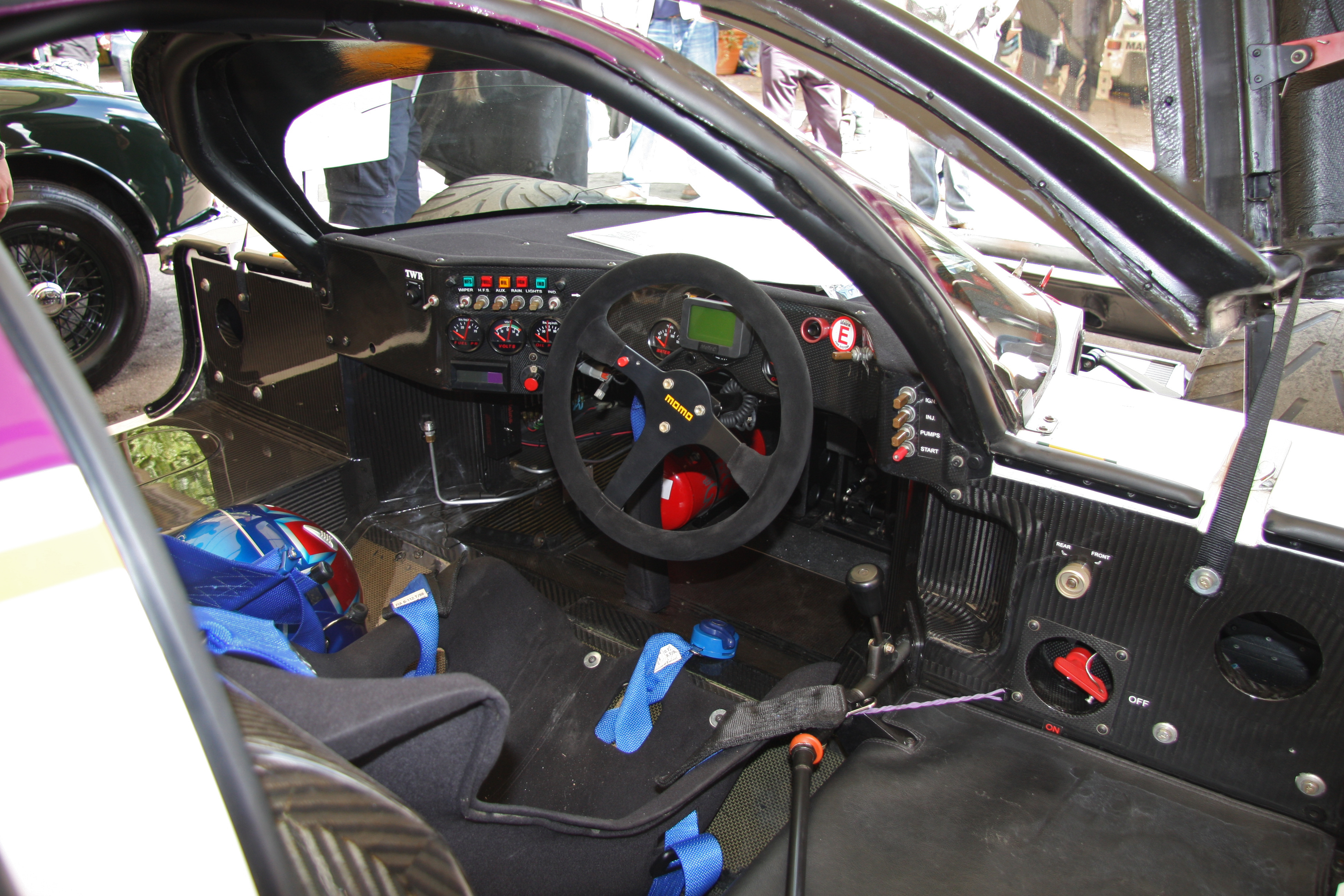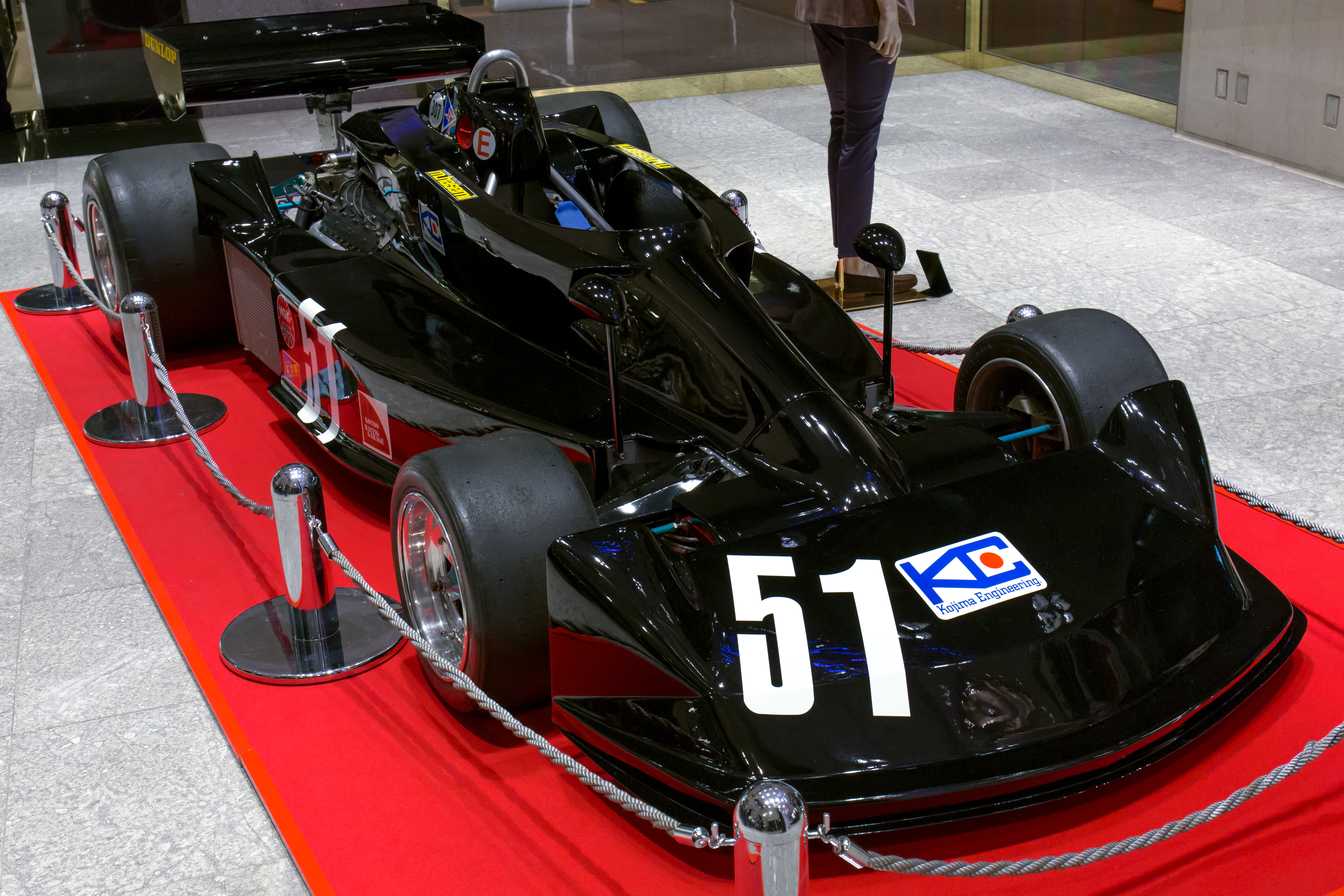|
1991 Sugo 500km
The Sugo Inter 500 km, was the fifth round of both the 1991 All Japan Sports Prototype Car Endurance Championship season, 1991 All Japan Sports Prototype Championship and the 1991 Long Distance Series Seasons, 1991 Long Distance Series, held at the Sportsland SUGO, Sugo on 15 September, in front of a crowd of approximately 45,000. Report Entry A total of 14 cars were entered for the event, in two classes, one for cars running to Group C, Group C1 specification and the other to IMSA GT Championship, IMSA GTP regulations. Qualifying The Nisseki Racing Team of George Fouché and Steven Andskär took pole position, in their Porsche 962, Porsche 962GTi ahead of the Toyota Team SARD’s Toyota 91C-V of Roland Ratzenberger and Pierre-Henri Raphanel, by only 0.047secs. Race The race was held over 135 laps of the Sportsland Sugo circuit, a distance of 500 km (actual distance was 500.075 km). Eje Elgh and Geoff Lees (racing driver), Geoff Lees took the winner spoils for t ... [...More Info...] [...Related Items...] OR: [Wikipedia] [Google] [Baidu] |
Volker Weidler
Volker Hermann Weidler (born 18 March 1962) is a retired racing driver from Germany, best known for winning the 24 Hours of Le Mans in 1991. Career Formula racing In 1985, he became German Formula Three champion. In the 1989 Formula One season, Weidler entered 10 Formula One Grands Prix, racing for the Rial team, but failed to qualify the uncompetitive car on every occasion. After Formula One, he moved to Japan and raced in the Japanese Formula 3000 Championship and the All Japan Sports Prototype Championship. He often fought over the title with Kazuyoshi Hoshino, Ross Cheever and others in the Japanese Formula 3000, and became popular in Japan. GT / Sportscars In 1991, Weidler teamed with Johnny Herbert and Bertrand Gachot to win Le Mans behind the wheel of the Wankel engine-powered Mazda 787B, marking also the first win of the legendary French race by both a Japanese manufacturer and engine supplier. This Wankel engine-powered car was noted for being very loud. Possibl ... [...More Info...] [...Related Items...] OR: [Wikipedia] [Google] [Baidu] |
Hideo Fukuyama
is a Japanese racing driver. A former competitor at the 24 Hours of Le Mans, he attempted to compete in the NASCAR Winston Cup Series in the early 2000s, but only qualified for four races before leaving the series. He was the first Japanese driver to compete in NASCAR's top series. Career Open-wheel and sports cars Competing in his native Japan, Fukuyama established a career as a road racer, winning the 1979 Formula Libre 500 Japanese championship, the 1992 Japanese Touring Car Championship and 1997 Super GT GT300 class championship, and winning the LMGT class at the 2000 24 Hours of Le Mans. Stock cars Fukuyama made his debut in NASCAR competition driving in exhibition races at Suzuka Circuit in 1996 and 1997 for Travis Carter Enterprises, and at Twin Ring Motegi in 1998 for Jeff Davis Racing. He crashed in the inaugural NASCAR Thunder 100, Suzuka Thunder Special in 1996, finishing 22nd; in 1997 he finished 21st, retiring with ignition failure after 103 laps. In Motegi's ... [...More Info...] [...Related Items...] OR: [Wikipedia] [Google] [Baidu] |
SARD
is a Japanese tuning company and racing team from Toyota, Aichi, mainly competing in the Super GT series and specialising in Toyota tuning parts. History The company was formed in 1972 as Sigma Automotive Co., Ltd by Shin Kato to develop and produce motorsport related parts and accessories as well as operating their own racing team.SARD Sigma began its racing career in the and for the following year participated for the first time in the with their |
Jaguar XJR-11
The Jaguar XJR-11 was a sports-prototype racing car introduced for the 1989 World Sports Prototype Championship, while its sister car the XJR-10 was introduced to compete in IMSA series races. Development For the 1989 season, Tom Walkinshaw realised that the TWR produced V12 Jaguar sports prototypes were lacking competitiveness, especially in short sprint events. The small, light weight forced induction engines used by competitors such as Mercedes-Benz outperformed the big, naturally aspirated engines that Jaguar Sport had been using since the start of the programme. Jaguar started development of a new engine in order to stay competitive. The Rover V64V 3.5 L V6 engine originally designed for the MG Metro 6R4 rally car proved to be an ideal engine for the new car, with its weight of just and consistent performance. Jaguar developed two variants of the engine: the 3.0 L variant was intended for competition in the IMSA series and the 3.5 L variant was intended for competition i ... [...More Info...] [...Related Items...] OR: [Wikipedia] [Google] [Baidu] |
Tom Walkinshaw Racing
Tom Walkinshaw Racing (TWR) was a motor racing team and engineering firm founded in 1976, in Kidlington, near Oxford, England, by touring car racer Tom Walkinshaw. The company initially handled privateer work before entering works touring car racers for manufacturers such as Mazda and Rover. However, TWR became most closely associated with Jaguar, a relationship which started in 1982 with the successful entry of the Jaguar XJS into the European Touring Car Championship, chalking up a number of wins that year. The relationship continued and by 1988, TWR-Jaguar had taken its first Le Mans victory in a V12-powered XJR-9. Further success followed with a Le Mans win in 1990. TWR and Jaguar formed JaguarSport initially to build tuned versions of Jaguar road-cars, culminating in the production of the XJ220 and XJR-15 sports cars at a new facility at Bloxham. With Jaguar bought by Ford in 1989, its relationship with TWR faded and by 1994, JaguarSport had been liquidated, with the Blox ... [...More Info...] [...Related Items...] OR: [Wikipedia] [Google] [Baidu] |
Jeff Krosnoff
Jeffrey John Krosnoff (September 24, 1964 – July 14, 1996) was an American race car driver. A competitor in the CART PPG Indy Car World Series, he was killed in a racing accident during the 1996 Molson Indy Toronto. Early life and career Krosnoff was born in Tulsa, Oklahoma, but grew up in La Cañada, California, where he attended Flintridge Preparatory School, a private high school. He then attended the University of California, San Diego for one year beginning in September 1982. Afterward, he transferred to UCLA, where he majored in Business. Throughout his college career, Krosnoff was focused on pursuing his dream of professional racecar driving. Krosnoff competed in Japan in Formula 3000, where he was active from 1989 to 1995. Krosnoff also competed in the 24 Hours of Le Mans several times, scoring 2nd in 1994. In the 1996 season, he made 11 starts in the CART Champ Car Series, driving a Reynard-Toyota for Arciero-Wells Racing. Death On July 14, 1996, with f ... [...More Info...] [...Related Items...] OR: [Wikipedia] [Google] [Baidu] |
Mauro Martini
Mauro Martini (born 17 May 1964) is a former Italian race car driver. Highlights of his career included placing runner-up in both Italian Formula Three Championship and the Formula 3 European Cup, both in 1988. He was third in the 1990 Japanese Formula 3000 Championship, later won the championship in 1992 and was second with Toyota is a Japanese multinational automotive manufacturer headquartered in Toyota City, Aichi, Japan. It was founded by Kiichiro Toyoda and incorporated on . Toyota is one of the largest automobile manufacturers in the world, producing about 10 ... at the 1994 24 Hours of Le Mans. His last year of racing was in 1997. References External links Information at driverdb.com 1964 births Living people Italian racing drivers Japanese Formula 3000 Championship drivers Formula Nippon drivers Italian Formula Three Championship drivers FIA GT Championship drivers 24 Hours of Le Mans drivers International Formula 3000 drivers World Sports ... [...More Info...] [...Related Items...] OR: [Wikipedia] [Google] [Baidu] |
Nissan R89C
The Nissan R89C was a Group C sports prototype developed by Nissan. Development Replacing the original March built series of prototypes that Nissan had used, the R89C was part of Nissan's increased involvement in the project. Developed in conjunction with the Lola firm, the R89C featured a Kevlar and carbon-fibre based monocoque chassis (named ''T89/10'' by Lola). Nissan's new twin-turbo VRH35 3.5L V8 DOHC engine was mounted in a stressed installation for better chassis rigidity and produced up to 950bhp. Racing history In the 1989 World Sportscar Championship season, Nissan struggled to solve not only reliability problems, but also to find pace from the new chassis and engine. As a result, the R89C was only able to score points in three races. Even though, it finished the season fifth in the team's championship. In the All Japan Sports Prototype Championship, the R89C suffered the same fate, unable to compete with its developed Porsche and Toyota opponents, leaving Nissan to ... [...More Info...] [...Related Items...] OR: [Wikipedia] [Google] [Baidu] |
Masahiko Kageyama
is a former racing driver from Japan. He participated in the Japanese Grand Touring Car series in the top category between 1993 and 2002. Kageyama won the inaugural Japanese Grand Touring Car championship, in the Nismo Nissan Skyline GT-R R32, before winning the next two championships. He also won the All-Japan Formula Three Championship in 1989, and the Japanese Touring Car Championship in 1993. Along with Nissan Motorsports teammates Aguri Suzuki and Kazuyoshi Hoshino, he drove a Nissan R390 GT1 to a third-place finish at the 1998 24 Hours of Le Mans. Kageyama is the CEO of M-Proto Inc., a supplier of brake pads, based in Fujisawa, Kanagawa. His younger brother is Masami Kageyama, who also competed in JGTC and at Le Mans. Racing record Complete Japanese Formula 3000 Championship/Formula Nippon results (key Key or The Key may refer to: Common meanings * Key (cryptography), a piece of information that controls the operation of a cryptography algorithm * Key (lock) ... [...More Info...] [...Related Items...] OR: [Wikipedia] [Google] [Baidu] |
Hideki Okada (racing Driver)
Hideki Okada (born 28 November 1958) is a Japanese former racing driver. Japanese Formula 3000 Championship/Formula Nippon results (key Key or The Key may refer to: Common meanings * Key (cryptography), a piece of information that controls the operation of a cryptography algorithm * Key (lock), device used to control access to places or facilities restricted by a lock * Key (map ...) (Races in bold indicate pole position) (Races in ''italics'' indicate fastest lap) Japanese Touring Car Championship (-1993) Class results Japanese Touring Car Championship (1994-) results References 1958 births Living people Japanese racing drivers Japanese Formula 3000 Championship drivers 24 Hours of Le Mans drivers World Sportscar Championship drivers {{Japan-autoracing-bio-stub Long Distance Series drivers Japanese Touring Car Championship drivers Mugen Motorsports drivers Nakajima Racing drivers Japanese Sportscar Championship drivers Team LeMans drivers ... [...More Info...] [...Related Items...] OR: [Wikipedia] [Google] [Baidu] |
Masahiro Hasemi
is a former racing driver and team owner from Japan. He started racing motocross when he was 15 years old. In 1964 he signed to drive for Nissan. After establishing himself in saloon car and GT races in Japan, he participated in his only Formula One race at the 1976 Japanese Grand Prix for Kojima on 24 October 1976. He qualified 10th after an error which cost him his chance of a pole position and finished 11th, seven laps behind the winner. Contrary to a widely propagated but mistaken result, however, he never set a fastest lap in a Formula One championship race. Along with compatriots Noritake Takahara and Kazuyoshi Hoshino, he was the first Japanese driver to start a Formula One Grand Prix. Hasemi became the Japanese Formula 2 champion in 1980, and got two titles in the Fuji Grand Champion Series in 1974 and 1980. After that he reverted to racing Skylines, which he became heavily synonymous with in Group 5, touring cars and JGTC. He won the Japanese Touring Car Championship in ... [...More Info...] [...Related Items...] OR: [Wikipedia] [Google] [Baidu] |




